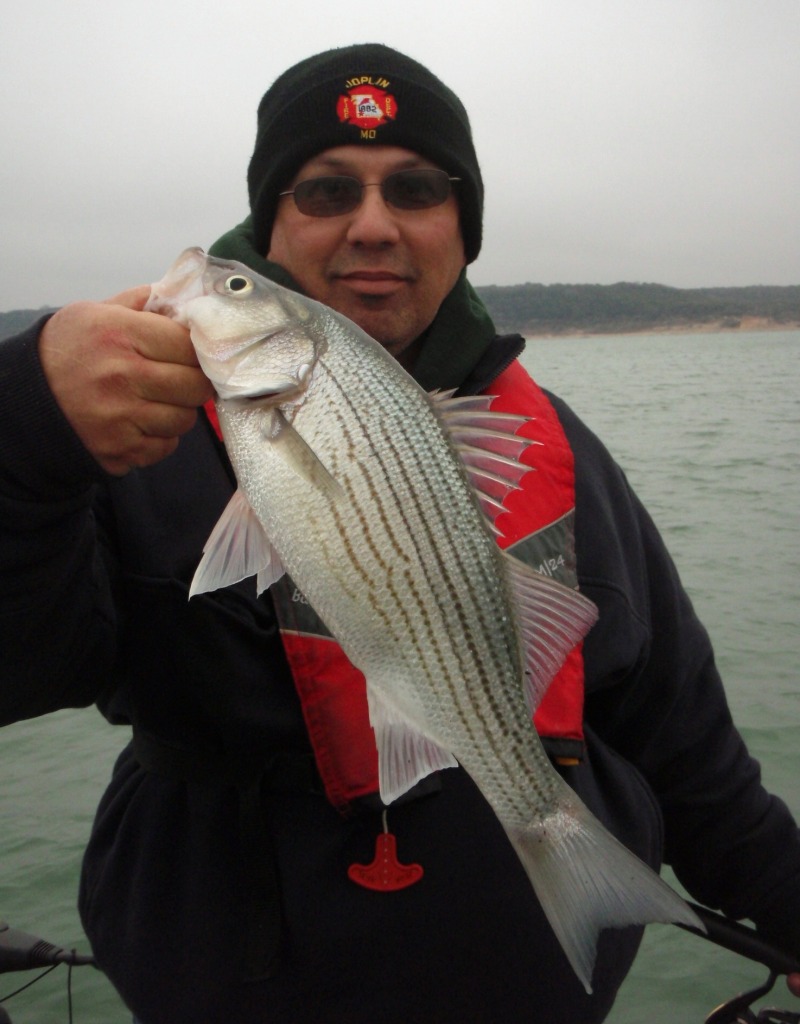This past Sunday afternoon I conducted an on-the-water sonar session with Mr. Mitch Randles, the City of Temple Fire Chief, on Belton Lake.
A “Sonar Session” success story — Mitch saw fish on sonar, reacted to them properly, held the boat in position over the fish we’d spotted, and was rewarded for his efforts.
Mitch and his wife came out of retirement in Missouri to take the Fire Chief job and have been in Texas only since August of 2014. Back in Missouri (or, as he pronounces it “Missoura”) Mitch fished for multiple species, mainly on Lake Stockton.
Mitch runs a Ranger bass boat equipped with a Lowrance Elite 7x HDI on the bow, a Lowrance Elite 7 HDI on the console, and a Lowrance HDS5 with Insight USA mapping also on the console.
We began by going screen by screen starting with his chartplotter screen, then onto his colored sonar screen, and ending with his downlooking StructureScan screen. We tweaked all the setting on each page, making sure each was optimized for the clear water and rocky bottom on Belton.
On the chartplotter screen, we covered the use of waypoints and trails. On the colored sonar screen, we tweaked sensitivity, colorline, ping speed, scroll speed, the color palette, and more, and on the StructureScan screen we adjusted the color palette and contrast.
Once all was set up well on each unit (none of the 3 were networked, so, we set up each unit individually), we set out in search of bottom features and fish in order to help Mitch see what fish and fish-holding structures looked like on a well-adjusted unit. Fortunately, we found a large, suspended school of mixed white bass and hybrid stripers, thus allowing us not only to see these fish, but to watch our baits descend into them, and then watch the fish respond, become hooked, and watch excited schoolmates follow our hooked fish up to the surface. We watched this play out exactly 21 times as we boated white bass and hybrid stripers steadily for about an hour and a half.
As we wrapped up, I left Mitch with a list of recommendations to take action on as time and budget allowed. These action items included:
1. Checking his bow-mounted sonar’s transducer mounted to his trolling motor for levelness before each outing.
2. Taking the two console-mounted sonar units’ transducers out of the bilge area and mounting them externally in direct contact with the water for better performance.
3. Dedicating one console unit to mapping and waypoint collection to avoid having waypoints spread across several un-networked units.
4. Connecting the power leads for the bow-mounted unit to the starting battery to avoid interference.
5. Connecting the power leads for the console-mounted units to the trolling motor battery to avoid interference.
6. Using the console mounted HDS5 for colored sonar since it (alone) had color palette #13 available.
7. Using the console mounted Elite 7 HDI for a combination of mapping and down imaging since it has a wider screen than the HDS5.
We had a very productive 3 hours on the water resulting in a few fish caught as icing on the cake. The more important thing is that Mitch now knows what is necessary to get the most out of the units he has paid good money for.


